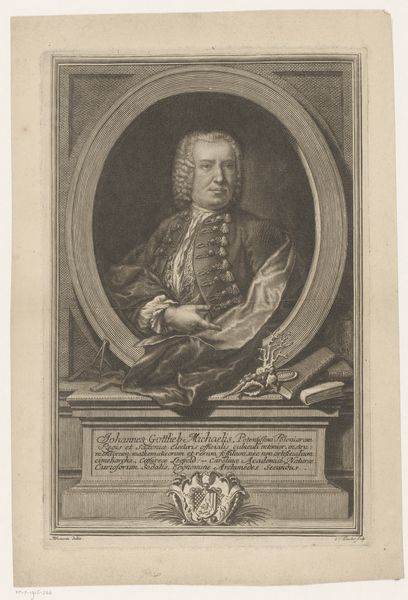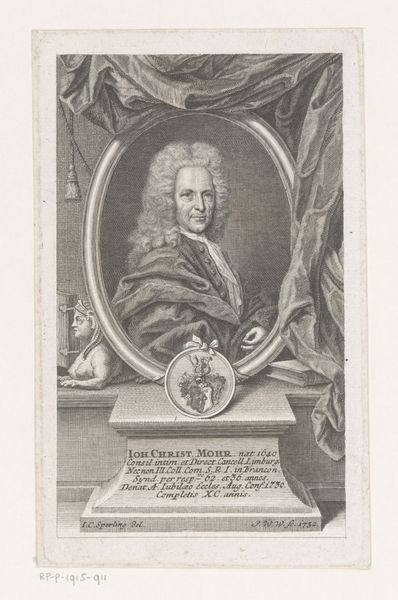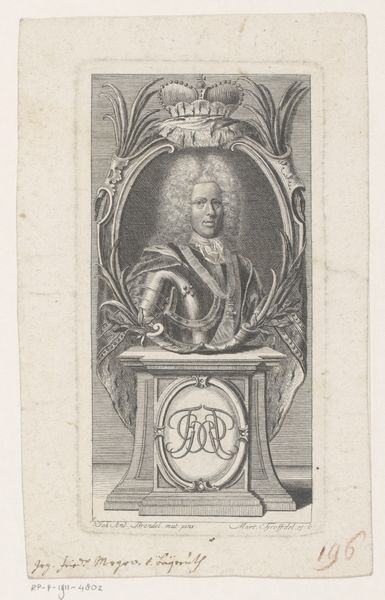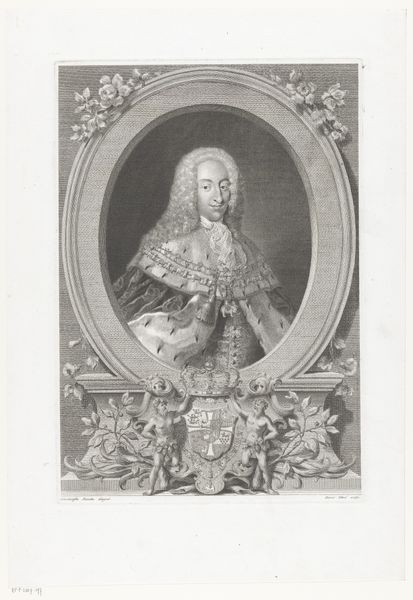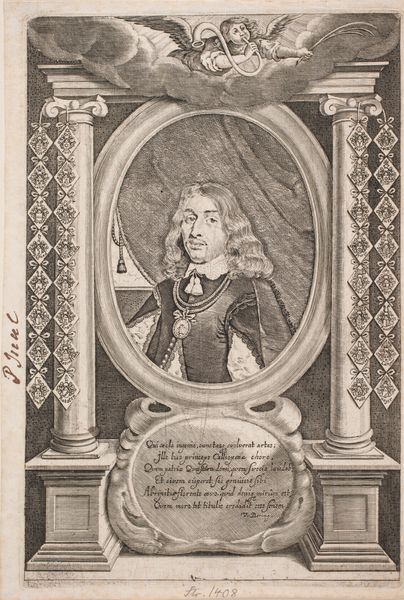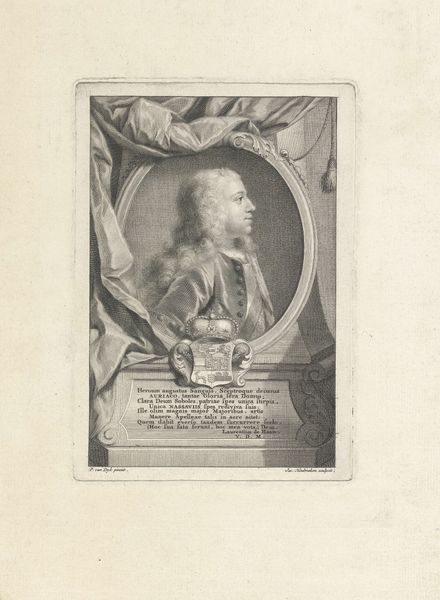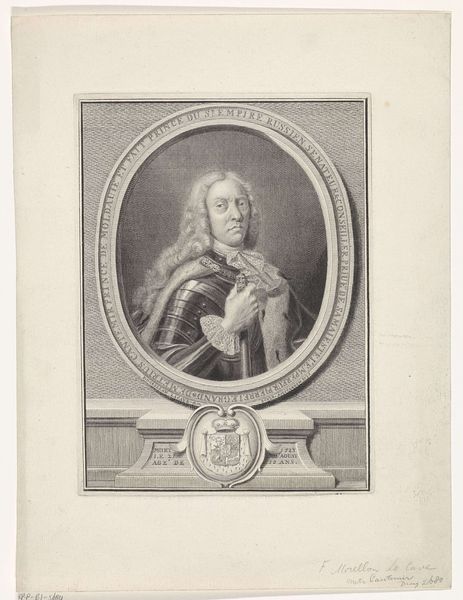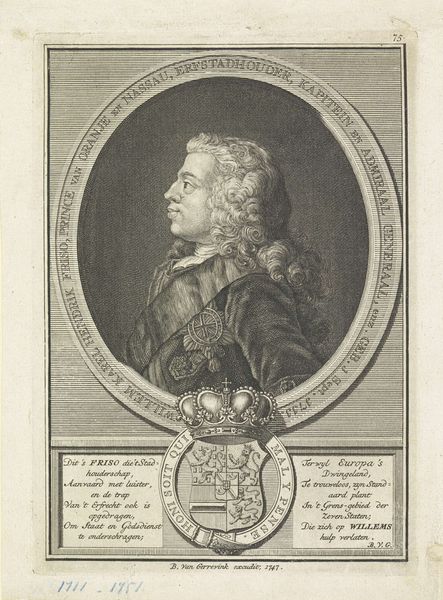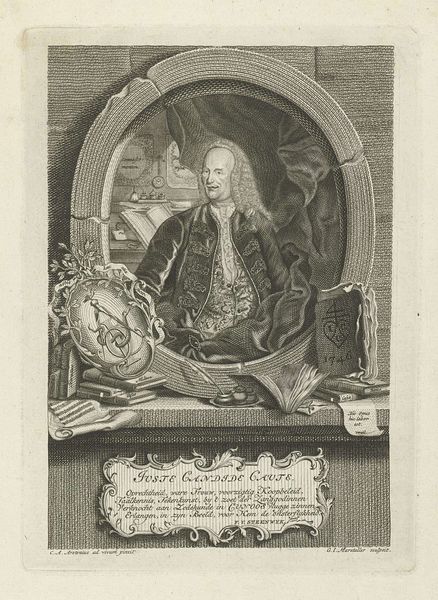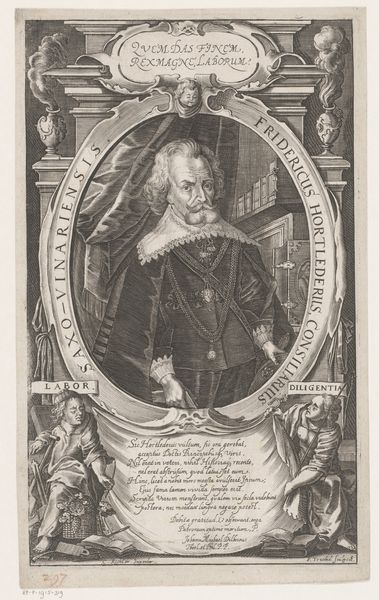
print, engraving
#
portrait
#
baroque
#
dutch-golden-age
# print
#
old engraving style
#
history-painting
#
engraving
Dimensions: height 169 mm, width 117 mm
Copyright: Rijks Museum: Open Domain
Editor: So this is Jacob Houbraken’s portrait of Willem IV, Prince of Orange-Nassau, likely an engraving from sometime in the 1720s or 30s. There's something both formal and intimate about it at the same time. How do you interpret this work, looking at it through your lens? Curator: The engraving is more than just a likeness; it's a deliberate construction of power through symbolism. Note how Willem is framed by drapery, suggestive of the stage and performance, and by that ornate cartouche, carrying not only the coat-of-arms, but also emblematic significance. Can you see how this isn’t merely a depiction, but also an active assertion of identity? Editor: I do. It's interesting how that cartouche presents this elaborate coat-of-arms. Curator: Absolutely. Arms speak volumes! What elements jump out to you within them? Editor: The crown is the most prominent symbol. I also see a city landscape? I guess those communicate authority and domain. But how does all of that connect with conveying a deeper cultural memory, as you put it? Curator: These symbols aren't arbitrary; they're carefully selected to invoke a legacy. The crown anchors Willem in the unbroken chain of Dutch royalty. The city is part of heraldry. By presenting Willem this way, the print connects him to cultural identity. What I wonder is whether an image like this creates continuity – or insists upon it. Editor: I see, so the artwork becomes part of shaping the historical narrative, not just illustrating it. That changes everything about how I see it. Thanks! Curator: Exactly! And by extension, it helps us understand how power is visually encoded and perpetuated across generations. A very insightful analysis!
Comments
No comments
Be the first to comment and join the conversation on the ultimate creative platform.

